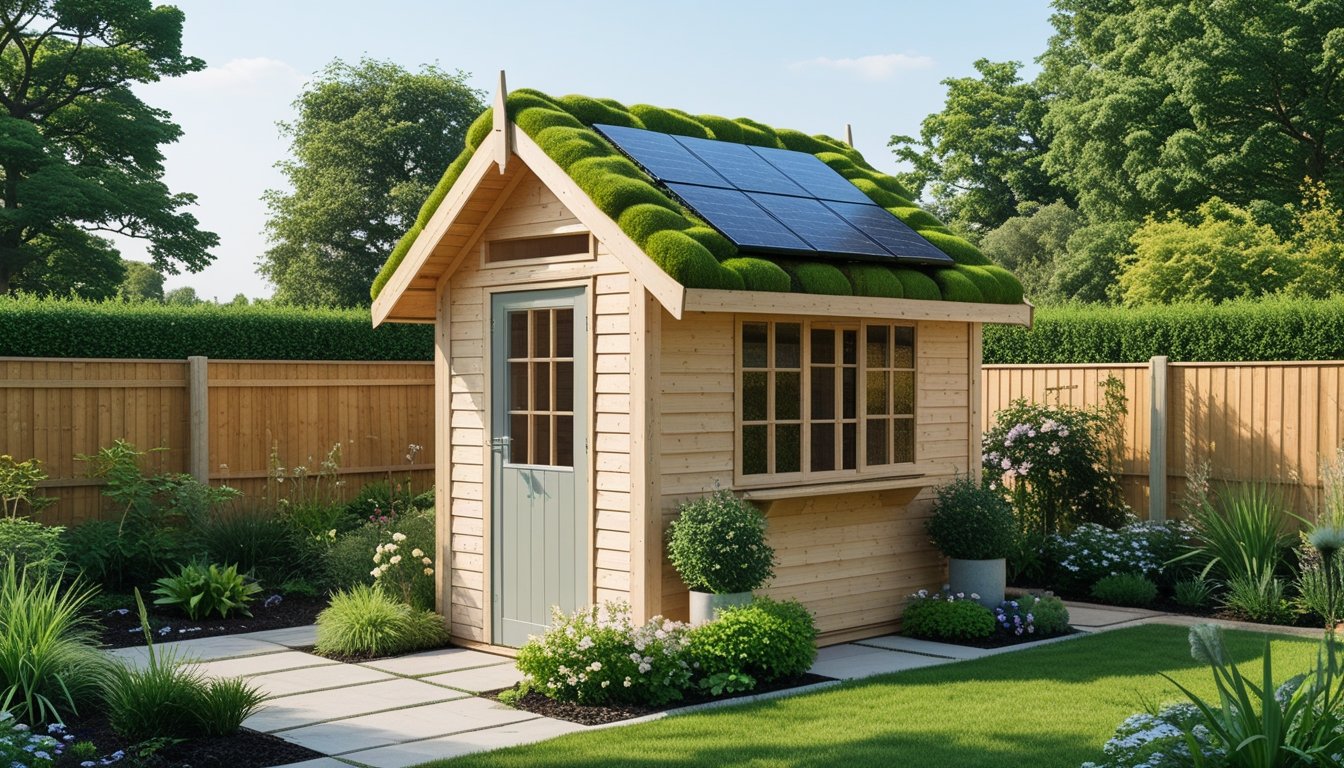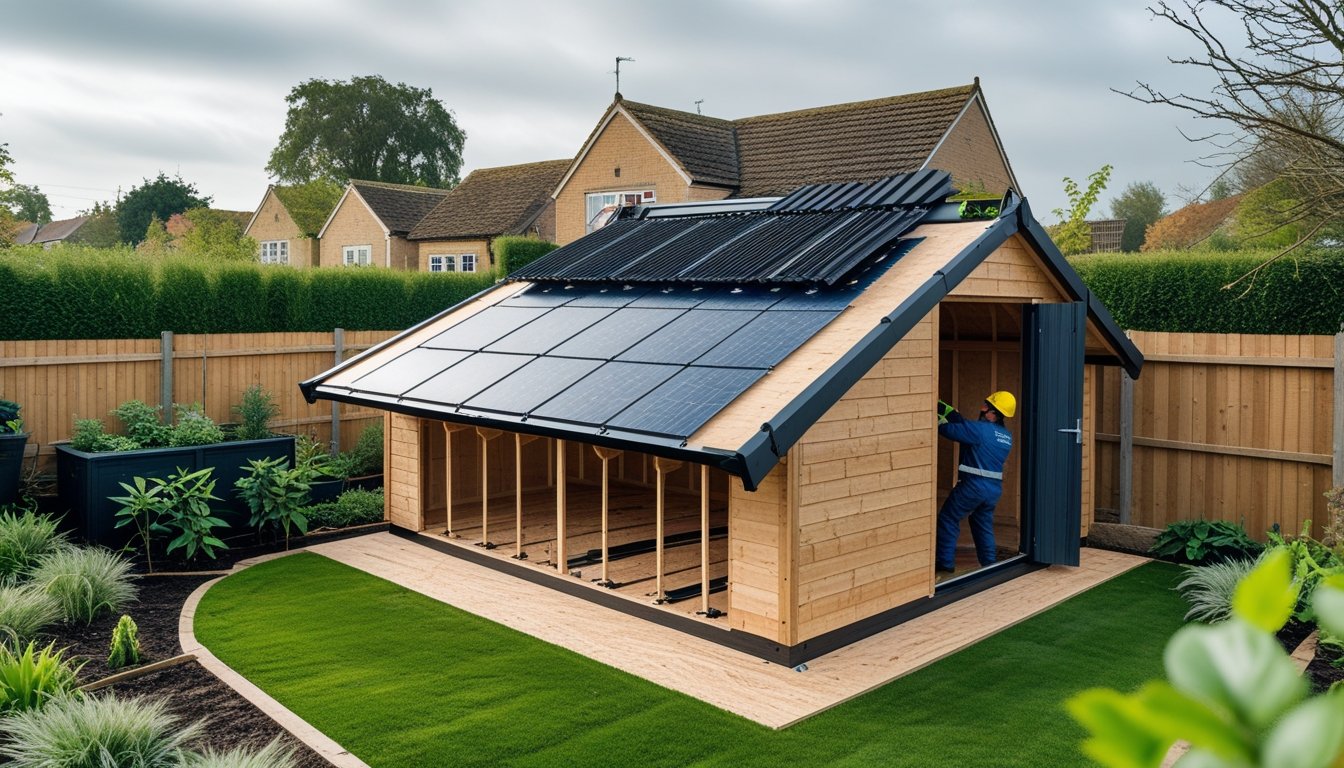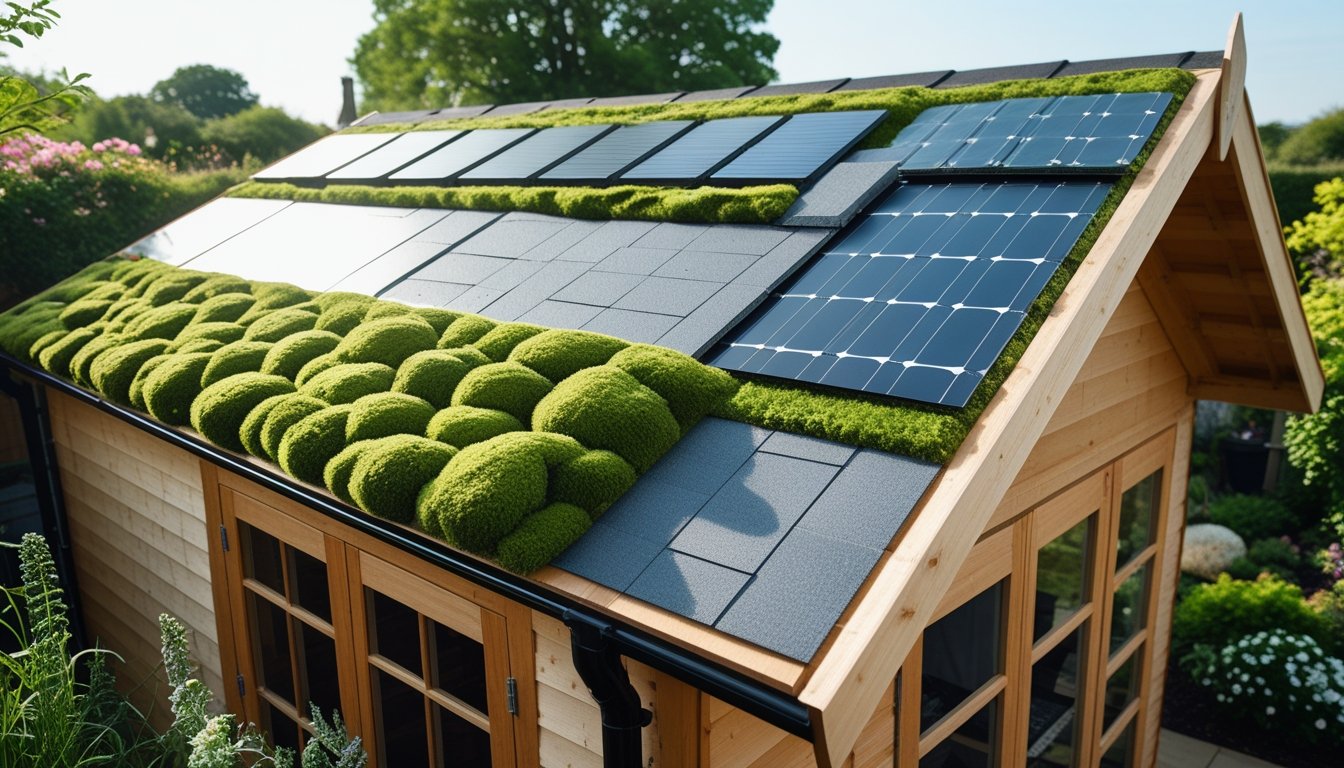Late updated: 31 Oct 2025 08:10
Written by: Oliver Bennett
Eco-Friendly Roofing Materials For UK Garden Sheds: A Comprehensive Guide
Exploring eco-friendly roofing materials for UK garden sheds is a practical way to contribute to environmental sustainability while enhancing the functionality and aesthetic appeal of our outdoor spaces. The best eco-friendly materials include green roofs like sedum roofs, lightweight plastic tiles made from recycled materials, and durable alternatives like EPDM rubber roofing and Onduline sheets, each offering unique sustainability benefits. As homeowners become more environmentally conscious, these innovative solutions not only protect against the unpredictable British weather but also minimise environmental impact.

We often find garden sheds serve as valuable extensions of our homes, providing extra storage or workspace. This means selecting a sustainable roofing material that ensures durability and weather resistance is crucial. Our guide will delve into the benefits and potential downsides of various eco-friendly roofing options, helping you make an informed decision for your next garden project.
Key Takeaways
- Eco-friendly materials enhance shed sustainability.
- Choose durable and weather-resistant options.
- Consider both installation and performance factors.
Eco-Friendly Roofing Materials for UK Garden Sheds
Eco-friendly roofing materials can significantly enhance the sustainability of garden sheds in the UK. Options such as green roofs, sustainable timber, and recycled bitumen offer effective and environmentally responsible alternatives to traditional materials.
Green Roof Systems and Their Environmental Benefits
Green roof systems integrate vegetation into the roofing structure. They're effective for garden sheds as they offer insulation, reducing energy use. They help manage rainwater, lessening runoff and promoting natural drainage. Biodiversity is another key benefit. These roofs create habitats, supporting local wildlife like birds and insects. We can design these systems using native plants suited to UK climates, ensuring sustainability and low maintenance.
Sustainable Timber Options for Shed Roofing
Sustainable timber remains a favoured choice for roofing due to its renewability and aesthetic appeal. It is sourced from forests managed to preserve biodiversity and ecosystem integrity. Options like certified cedar and larch offer natural resistance to weather conditions. Sustainable timber provides excellent insulation, enhancing energy efficiency. By selecting certified wood, we contribute to reducing deforestation's impact, ensuring materials are responsibly harvested.
Recycled Bitumen and Synthetic Roofing Solutions
Recycled bitumen and synthetic materials present durable and economical alternatives. Bitumen can be reused from previous installations, reducing waste. It provides excellent waterproofing, crucial for the UK’s rainy conditions. Synthetic options like plastic and rubber tiles often come from recycled sources. They're lightweight and flexible, making them ideal for shed roofs. These solutions offer longevity and require minimal maintenance, aligning with sustainable practices.
Installation and Performance Factors for Sustainable Shed Roofs

Successfully installing an eco-friendly shed roof requires careful consideration of multiple factors to ensure long-term performance. The integration of a waterproof membrane, the structural support for roofing materials, and ongoing maintenance are crucial for achieving desired sustainability outcomes.
Waterproof Membrane Requirements
A waterproof membrane is essential in protecting a garden shed from water damage and ensuring a roof's longevity. For eco-friendly roofing solutions, this membrane should be compatible with sustainable materials such as green roofs or reclaimed metal. Options like EPDM (ethylene propylene diene monomer) provide excellent waterproofing properties and flexibility.
When installing, attention must be paid to sealing seams and overlaps. This is critical for preventing moisture ingress. Adequate drainage must also be incorporated to channel water away effectively. The choice and quality of a waterproof membrane should not be underestimated, as it forms the foundation of the entire roof system's moisture defence.
Supporting Structure and Weight Considerations
A key factor in sustainable shed roofing is the supporting structure's ability to bear the weight of chosen materials. Green roofs, for instance, require robust support to accommodate soil and vegetation load. Metal or slate roofing materials are also heavier than standard roofing options.
The load-bearing capability of the shed should be assessed by a professional. Timber frameworks might need reinforcement to handle increased weights. Calculating these factors is essential to avoid structural sagging or failure. Attention to these details during design and installation can prevent costly adjustments or repairs down the line.
Maintenance and Longevity of Eco-Friendly Roofing
Maintenance is crucial to extending the life of eco-friendly roofing materials. Regular inspections for damage or wear are necessary to maintain performance. For green roofs, vegetation should be monitored to ensure it does not impede drainage systems.
Reclaimed materials, while eco-friendly, may require more frequent checks for corrosion or other signs of age. Cleaning protocols also vary; metal roofs, for instance, need different care compared to slate or living roofs. An informed approach to maintenance underscores the roof’s durability and sustainable characteristics, providing lasting environmental benefits over traditional materials.
Frequently Asked Questions

Selecting environmentally friendly materials for garden shed roofs requires understanding sustainability, durability, and climate impact. We address common queries about how options like green roofs and recycled materials contribute to eco-friendliness.
What are the most sustainable materials for garden shed roofing in the UK?
Sustainable roofing materials for garden sheds include EPDM rubber, metal roofing, and shingles made from recycled materials. These options are durable and have minimal environmental impact. Metal roofing is recyclable and long-lasting, while EPDM rubber provides excellent weather resistance.
How do green roofs contribute to the eco-friendliness of garden sheds?
Green roofs are covered with vegetation and provide natural insulation, reducing energy requirements. They improve air quality, absorb rainwater, and enhance biodiversity. Implementing a green roof can transform a standard garden shed into an environmentally beneficial structure.
Can recycled materials be effectively used for garden shed roofs?
Yes, recycled materials are a viable choice. Onduline roofing sheets, for example, are made from approximately 50% recycled content. This approach not only reduces waste but also cuts down on the use of new materials, supporting sustainability.
What are the long-term benefits of investing in an eco-friendly garden shed roof?
Investing in eco-friendly roofing can lead to cost savings through energy efficiency and reduced maintenance needs. These roofs often have longer lifespans, reducing the need for frequent replacements. By choosing green materials, we also contribute positively to environmental conservation.
How does the UK climate affect the choice of eco-friendly roofing materials for garden sheds?
The UK's climate, with its rain and occasional storms, demands durable and weather-resistant materials. EPDM rubber is particularly suitable due to its waterproof properties. Metal roofing also withstands harsh weather conditions, offering longevity and reliability.
What factors should be considered when selecting environmentally friendly shed roofing options?
Consider durability, local climate, and material sustainability. Evaluate the cost versus long-term benefits and any available incentives for green construction. Consulting with experts can provide insights tailored to specific needs and local conditions.
